A Guide to Bird Nesting Boxes
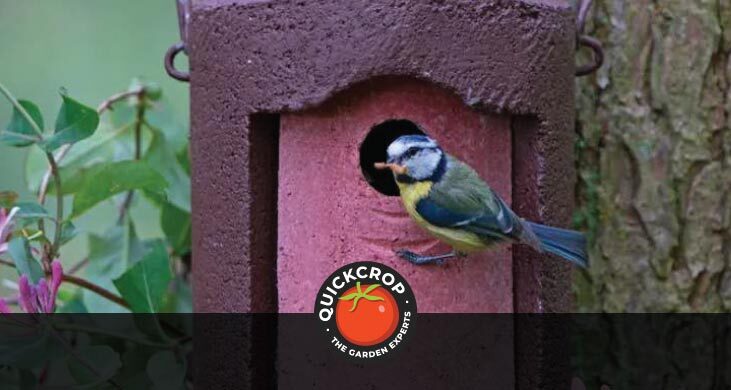
A bird friendly garden is a garden that feels more alive. The ambience of birdsong and the flutter of wings lend a serene air to our surroundings, as well as adding colour and interest for children. A healthy bird population can also have some great knock-on benefits for the vegetable garden, whether in terms of natural pest control or a healthier garden ecosystem. Birds will happily feed on aphids, slugs, flea beetles or cabbage caterpillars, keeping populations in check.
However, we can’t take birds for granted. Almost half of all bird species worldwide are in decline, while over 60% of Ireland's bird species are said to be in trouble, with 25% in 'severe decline'. These troubling trends can be caused by a number of factors, including the felling of old trees, stripping away of natural habitat (such as native hedgerow), modern building methods or the renovation/knocking down of old buildings.
Nest boxes make for a vital alternative for bird species as natural, traditional nesting habitats are stripped away. These habitats include natural hedgerows, old trees that are felled, or old buildings that are renovated or knocked down.
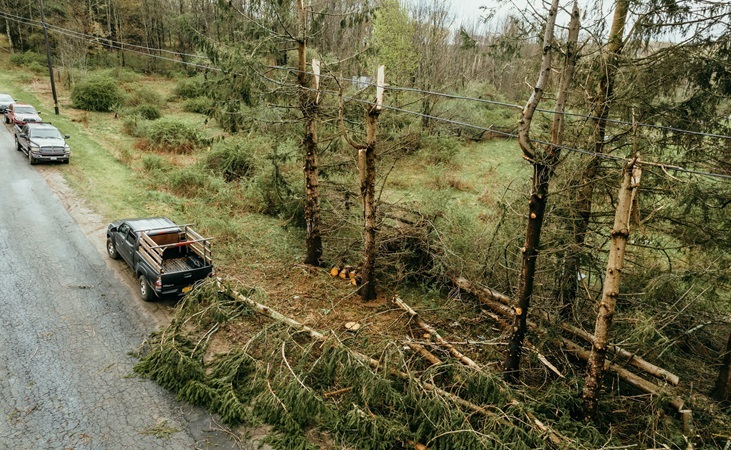
There are a wide range of nest box designs and materials, and one individual type of box can often be used by various bird species. It’s also possible to build your own nest box. There are some important principles when it comes to material and design though.
Bird Nesting Box Materials
The material that the nest box is made from should be well insulating. Materials like plastic, metal or thinner timber can easily overheat. The outer wooden boards should be 25mm thick: this ensures good insulation for freshly hatched offspring, and helps to stabilise the inner climate when outdoor temperatures are very hot or very cold.
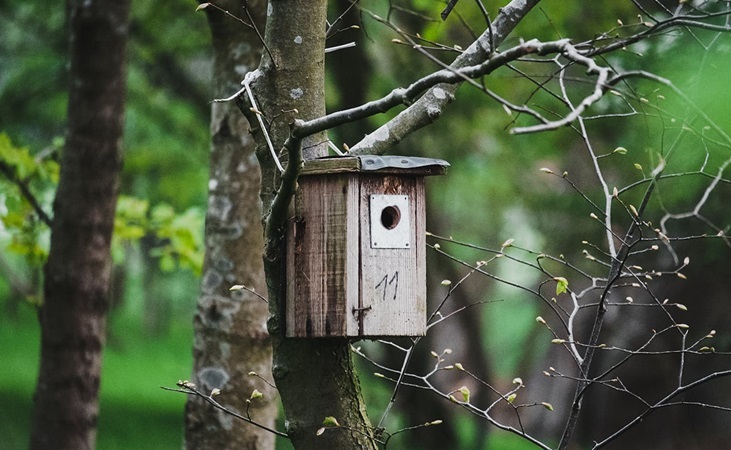
If making your own nest box, a soft wood material like pine is suitable and will be easier to cut to size. Wood should be unplaned and untreated to avoid exposing the young birds to chemicals. The exterior of the nest box can however be treated with a water-based preservative.
Drill some drainage holes at the base of the nest box, plus some very small holes near the roof to encourage air circulation. An overhanging roof can also encourage rain to runoff, as well as discourage predators. Angling the nest box slightly downwards is another method for keeping the interior dry and sheltered.
Drill bits can be used to create a clean entrance hole for birds (see guide to common entrance hole sizes further down below).
Some nest boxes can be a little expensive to buy, but you really do get what you pay for here as the higher quality materials provide an optimal nesting environment for birds. Schwegler’s conservation-grade boxes are made from a mix of clay, wood fibres and concrete, which makes for a breathable and temperature-regulated environment. They have very impressive occupancy rates when used in parks, woodlands, orchards and private gardens. Similarly, Vivara’s WoodStone nest boxes are so-called because they are made from a mix of wood fibres and concrete.

Schwegler Nest Box 1B (Brown) - 32mm hole
View ProductIdeally a nest box should be somewhat inconspicuous or natural-looking. Bright colours can attract predators. A perch may seem like a bird-friendly addition but it can also give potential predators a foothold.
A removable or hinged lid is a feature of many nest boxes. This allows for easy access when cleaning.
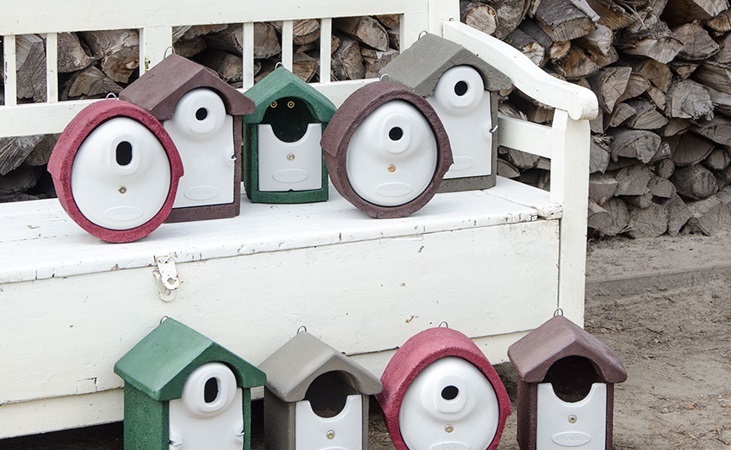
Entrance Holes
The diameter of the entrance hole of each box will influence who is likely to use it. A guide to common entrance sizes and the species that they suit follows: This is by no means comprehensive, and there are all kinds of 'niche' variations or designs
25-27mm: These smaller sized entrance holes are ideal for blue tits, coal tits or marsh tits. These birds can use boxes with larger entrances, but 25-27mm entrances will prevent access to bigger birds who may oust them from their nest.
28mm: This entrance size will suit Great Tits as well as nuthatches and pied flycatchers, the same birds mentioned above can also avail of these nest boxes.

Nest Box NKSE1 (28mm Entrance)
View Product32mm holes will allow access for the widest range of nest box inhabitants, including House Sparrows, Great, Blue, Marsh, Coal and Crested Tits, Nuthatches, Collared and Pied Flycatchers and Redstarts.
45mm: Starlings require this larger entrance hole size, as well as a more spacious nesting chamber. This size of nestbox can also provide shelter for the Great Spotted Woodpecker.
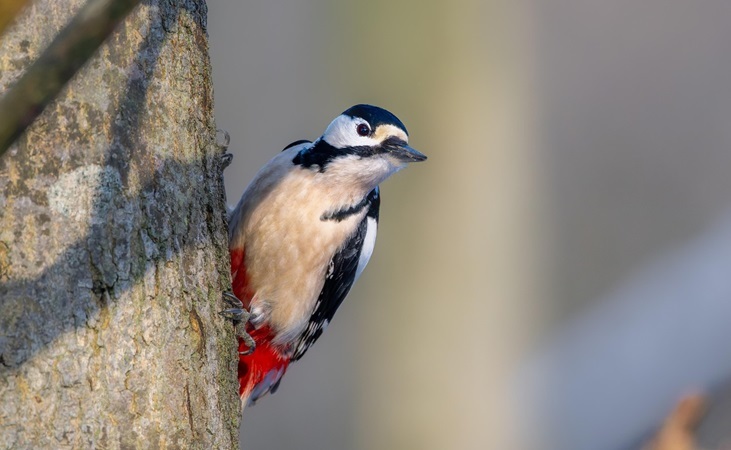
When to Put Up a Nest Box
There’s still time to get your nest box up in March, but after that it’s best to wait until the nesting or breeding season is over (under the Wildlife Act, nesting season in Ireland is considered to last from March 1st to August 31st). The earlier in advance of spring you can get a nesting box up, the more likely it is to be used. The best time is probably in autumn or winter, as it gives birds plenty of time to discover the nesting space ahead of the breeding season (it can also be used for shelter over the winter).
While you can sometimes have immediate results, birds often need time to discover these spaces and feel comfortable enough to start using them. Once they do though, they are likely to be loyal and see it as a space that they can return to again in the following years.

Schwegler Bird Home (Brown) - 1MR
View ProductLocation & Placement
Ideally the Nest box should be in a position that is somewhat sheltered from strong winds or sunlight (The more temperature-regulated the material, the less you have to worry about the latter).
In Ireland or the UK, having the nest box facing between the north and south east should help avoid the worst of inclement weather.
When it comes to height, the best placement can vary depending on the size of the entrance hole or the type of bird it’s been designed for. A height of 3-5 meters is often ideal to protect against predators such as cats, but it should be at least 2m (this can also prevent interference from curious passers by!).
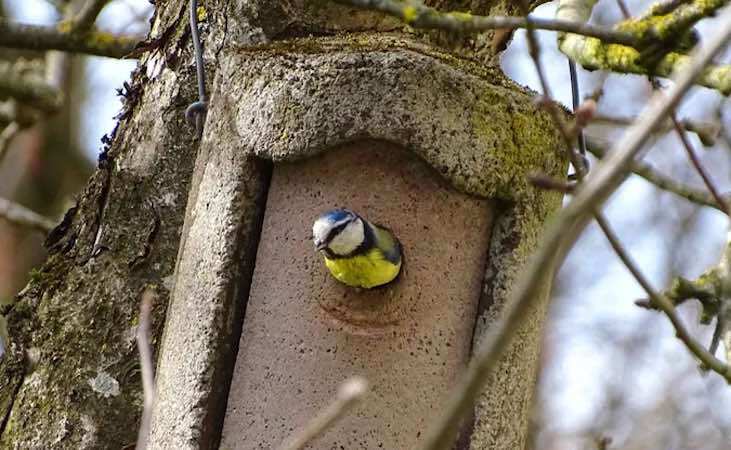
Open fronted nest boxes are usually placed lower, but careful placement is key and they should be surrounded by dense vegetation to safeguard against predators. Swifts on the other hand will benefit from boxes or nesting spaces that are placed at least 5 metres high.
Bird nesting areas should be placed or kept at a distance from a bird feeding area; if not this can cause territorial issues and disturbance between birds.
Nearby foraging sources can really help birds to take care of their young without leaving the nest for long periods. Edible or wildlife-friendly hedging can provide berries or seeds, while a patch of overgrown vegetation can attract earthworms or insects.

Predators
Birds can, unfortunately, face a number of threats. If you have a neighbouring cat you will be all-too-familiar with how they can hang out near a feeder and torment birds to get their kicks (tying small bells to the cat’s collar can help announce their presence). There are also squirrels, stoats, pine martens or crows to contend with.
Nearby/ overhanging branches or shrubbery are also something to be aware of, as predators can use these to try and gain access.

Open Fronted Nest Box - 2H
View ProductOpen Fronted Nest Boxes
This more open style of entrance mimics natural nesting sites found in hedgerows or low vegetation. Examples of birds that are likely to avail of these boxes include robins, wrens, spotted flycatchers or blackbirds. These nesting boxes are placed much lower and close to the ground (1-2m). The idea is that they are concealed by dense or thorny vegetation (such as bramble), to the point that they are somewhat camouflaged. The birds will still find them.
Wall Integrated Nest Boxes
Modern construction methods have led to the loss of cavities and spaces in buildings that would traditionally have been used by birds. Built-in nest boxes or blocks - made from concrete or composite material - are a proven, effective solution. They are designed to be built into walls or installed on external building facades. This can be done when renovating existing buildings, or they can be integrated into new builds.

Triple Swift Nest Box - 17A (Irish spec)
View ProductThis type of nesting is most commonly associated with the swift, but house sparrows and starlings are also known to avail of these spaces. Built-in nest boxes are very durable and will last decades, providing a permanent nest site that swifts can return to.
For swift nesting blocks it’s important to keep the area around the entrance free of obstructions or protrusions: swifts are known to approach in a ‘swooping’ pattern that helps them to slow down as they near the entrance.
Blue Tits
When it comes to attracting birds or wildlife in general to your garden, blue tits are an excellent place to start. They are one of Ireland’s most widespread birds, and their high-pitched birdsong can be heard in late winter and spring.
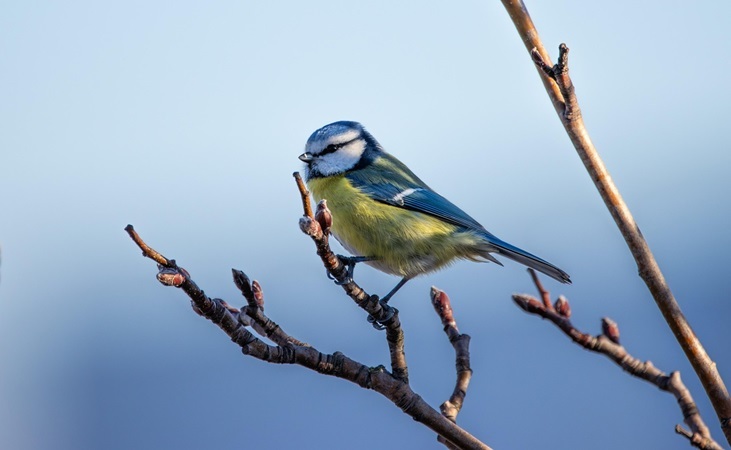
Blue tits can be territorial, so if you have more than one nest box keep them at least 3-5 meters apart. An entrance hole diameter of 25-27mm will suit Blue Tits and will keep out larger competing species.
Blue tits like to feed on caterpillars, so a patch of nettles on the edges of your garden can provide them with sustenance. They tend to lay a large number of eggs: not all of the hatched chicks will survive so it’s something of a numbers game. These small birds also like to scan the immediate area for threats before they leave their nesting space, so avoid situating it in a place where it’s surrounded by vegetation or obstructed.

Schwegler 2GR Nest Box - 3 x27mm hole
View ProductFor a conservation-grade solution, the Schwegler 2GR WoodCrete box is widely used in parks and woodland settings. It features three evenly spaced entrance holes as well as a spacious and well-lit chamber. It’s also suitable for similarly sized species such as the Marsh, Great and Crested Tits.
House Sparrow
The house sparrow may seem like a common enough fellow in gardens across the country, but it was recently placed on the Amber List due to a decline in Europe in general.
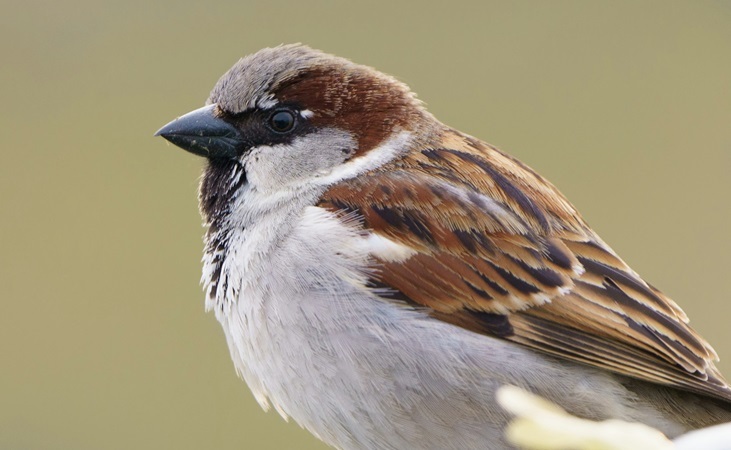
The options here include Vivara's WoodStone nest box, which can be hung on any building facade and features a slanting, overhanging roof. An ideal spot for this box is directly under rain gutters, and placed in a position where it's not in the sun all day long (in Ireland? Ha.) House sparrows like to nest in colonies, so placing multiple nest boxes together is preferable.
House Martin Nest:
House martins tend to construct their nests out of mud. However, mud of good quality can often be hard to find. Another issue is that smooth walls on buildings - which are more typical today than the rougher designs of old - don’t have as much purchase for their nests, which can then fall to the ground or be shaken loose by vibrations.

House Martin Double Nest - No. 9B
View ProductThese distinctively designed Schwegler nests, then, are not just an alternative but arguably a superior and more durable nesting environment. They are designed to be hung under eaves. House martins lay eggs from May to August, and they are loyal to their nesting sites. This nest can also be used by swallows when they return from their winter quarters (in Africa).
Barn Swallow Nest:
Barn swallows are known to build their nests inside stables, barns, warehouses or garages. As such this cup-shaped nest can be placed in all kinds of suitable buildings such as barns, cattle sheds and so on. It's important that the birds have constant access during the breeding period, so leave a window open or ajar.

Barn Swallow Nest - 10B
View ProductCan I Monitor My Nest Box?
Many nest boxes will have a hinged, removable roof to allow easy access for cleaning, maintenance or monitoring. It’s important not to disturb the nest box during the breeding season, as adult birds can get spooked and abandon the nest.
There are specially designed Wi-Fi cameras that can be used in combination with nest boxes. You can also safely observe from a distance or from behind a window.
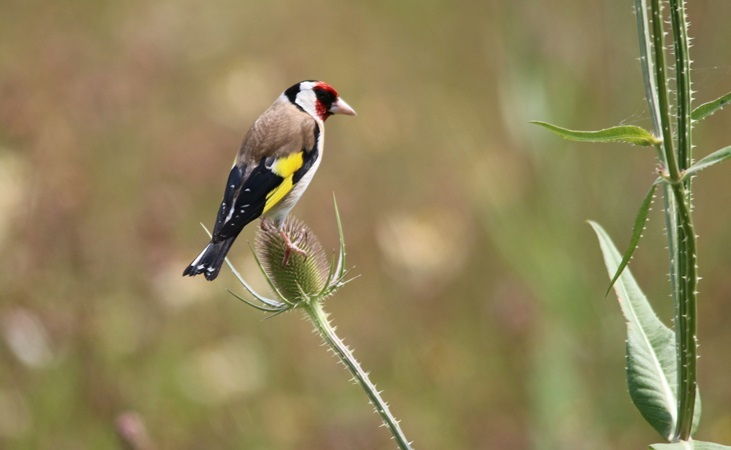
Will All Birds Use A Nest Box?
Not all bird species will find a nest box suitable. Chaffinches or goldfinches for example prefer to build their nest between trees and bushes. However, according to Teagasc over 30 bird species have been known to use provided nest boxes in Ireland, so you will have no shortage of takers with a good quality, well-designed nesting box.




